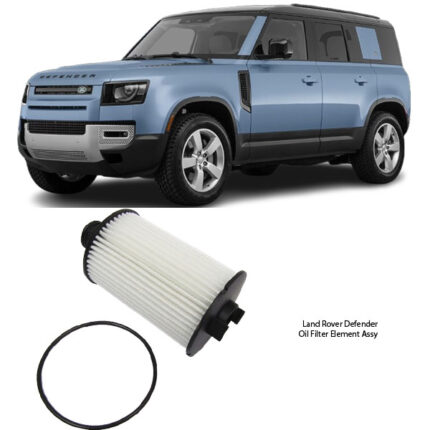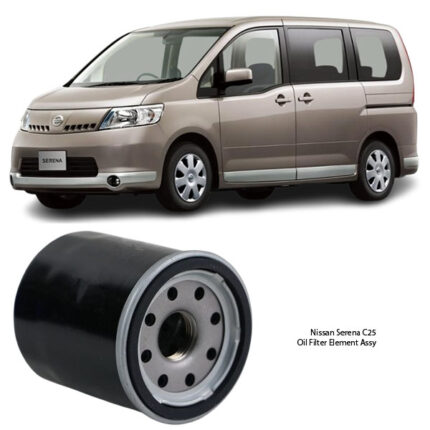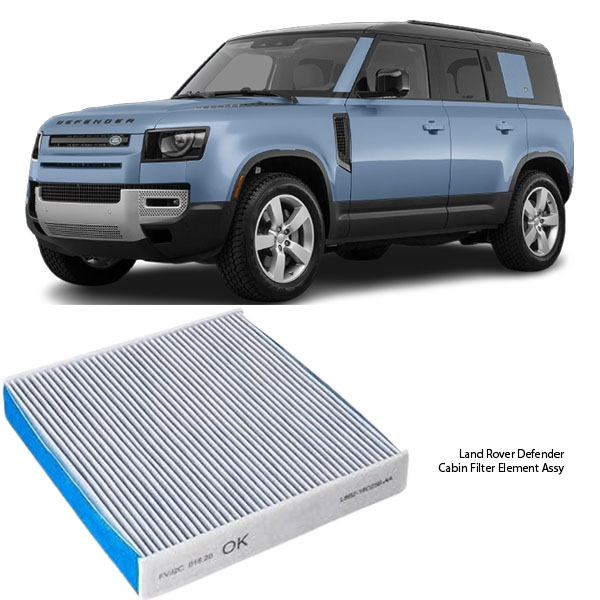-20%
Get Land Rover Defender 2020 Cabin Air Filter Element LR133511 in Kenya
The Cabin Air Filter Element is an essential component of a vehicle’s HVAC (Heating, Ventilation, and Air Conditioning) system. It is responsible for filtering the air that enters the cabin through the ventilation system, removing dust, pollen, pollutants, and other airborne contaminants. A clean cabin air filter ensures fresh, healthy air inside the vehicle, improving comfort and protecting passengers from harmful particles.
In this detailed guide, we will explore the functions, types, benefits, maintenance, and replacement of cabin air filters.
2. What Is a Cabin Air Filter Element?
A Cabin Air Filter Element is a pleated, fibrous material housed within a plastic or rubber frame. It is usually made from a combination of paper, activated carbon, and synthetic fibers. Its primary role is to trap airborne contaminants before they enter the passenger compartment through the HVAC system.
This filter plays a crucial role in maintaining air quality within the vehicle, especially for individuals with allergies, asthma, or respiratory conditions.
3. Functions of a Cabin Air Filter Element
3.1 Removing Dust and Dirt Particles
The filter prevents dust, dirt, and debris from entering the cabin, keeping the interior clean and reducing the accumulation of dust on dashboards, seats, and vents.
3.2 Filtering Pollen and Allergens
Pollen from trees, flowers, and grass can trigger allergies and respiratory issues. A cabin air filter traps these particles, providing relief for allergy sufferers.
3.3 Blocking Pollutants and Exhaust Fumes
A high-quality cabin air filter removes harmful pollutants, including vehicle exhaust fumes, smog, and industrial emissions, ensuring clean air circulation inside the vehicle.
3.4 Eliminating Odors
Some filters, especially those with activated carbon, help absorb and neutralize unpleasant odors caused by external pollutants, cigarette smoke, and mildew.
3.5 Preventing Mold and Bacteria Growth
The filter reduces moisture buildup in the HVAC system, preventing mold and bacteria growth that can cause bad odors and health issues.
3.6 Enhancing HVAC System Performance
A clogged or dirty cabin air filter can restrict airflow, forcing the HVAC system to work harder. A clean filter allows efficient airflow, improving heating and cooling performance.
4. Types of Cabin Air Filters
There are several types of cabin air filters, each offering different levels of filtration and protection.
4.1 Particulate Cabin Air Filters
- Basic filters designed to trap dust, pollen, and debris.
- Made from pleated paper or synthetic fibers.
- Effective for general air filtration but do not remove odors or gases.
4.2 Activated Carbon Cabin Air Filters
- Contains an additional layer of activated charcoal to absorb odors and harmful gases like carbon monoxide and nitrogen oxide.
- Ideal for urban areas with heavy pollution or smoky environments.
4.3 HEPA (High-Efficiency Particulate Air) Cabin Air Filters
- Offers superior filtration, trapping particles as small as 0.3 microns, including bacteria, mold spores, and fine dust.
- Recommended for individuals with severe allergies or respiratory conditions.
4.4 Antibacterial Cabin Air Filters
- Infused with antimicrobial agents to prevent bacterial and fungal growth.
- Helps maintain a healthier cabin environment.
5. Benefits of Using a High-Quality Cabin Air Filter
5.1 Improved Air Quality
Removes dust, allergens, and pollutants, ensuring cleaner and fresher air inside the vehicle.
5.2 Enhanced Passenger Comfort
Reduces airborne particles that can cause irritation, sneezing, or respiratory discomfort.
5.3 Better HVAC System Efficiency
A clean filter allows the air conditioning and heating system to function properly, providing consistent airflow and faster cooling or heating.
5.4 Extended HVAC System Lifespan
Prevents dust buildup in the ventilation system, reducing wear and tear on the blower motor and evaporator coil.
5.5 Reduction of Unpleasant Odors
Activated carbon filters neutralize foul smells from exhaust fumes, smoke, and outdoor pollutants.
5.6 Protection Against Mold and Bacteria
Prevents moisture accumulation that can lead to the growth of mold and bacteria inside the air ducts.
6. Signs That Your Cabin Air Filter Needs Replacement
6.1 Weak Airflow from Vents
If the airflow from the AC or heater feels weaker than usual, a clogged filter might be restricting airflow.
6.2 Unpleasant Odors in the Cabin
A musty, moldy, or foul smell inside the vehicle may indicate that the filter is contaminated with bacteria or mildew.
6.3 Increased Allergy Symptoms
If passengers experience sneezing, coughing, or eye irritation, the filter may no longer be effectively trapping allergens.
6.4 Foggy Windows That Take Longer to Clear
A dirty filter can reduce airflow to the defrosting system, making it difficult to clear foggy windshields.
6.5 Visible Dirt and Debris on the Filter
Inspecting the filter and noticing an excessive buildup of dirt, leaves, or insects is a clear sign that replacement is necessary.
7. How Often Should You Replace a Cabin Air Filter?
Most manufacturers recommend replacing the cabin air filter every 12,000 to 15,000 miles (20,000 to 25,000 km) or once a year. However, replacement intervals may vary based on driving conditions:
- City Driving/Polluted Areas: Replace every 6,000 – 10,000 miles due to exposure to smog and exhaust fumes.
- Rural/High-Dust Environments: Replace more frequently due to dust, pollen, and dirt accumulation.
- Normal Driving Conditions: Replace once a year or as specified in the owner’s manual.
8. How to Replace a Cabin Air Filter
Step-by-Step Guide
-
Locate the Cabin Air Filter
- Typically found behind the glove box, under the dashboard, or near the HVAC system.
- Consult your vehicle’s owner’s manual for exact location.
-
Remove the Old Filter
- Open the glove box and release any retaining clips.
- Slide out the old filter carefully.
-
Inspect the Old Filter
- Check for dirt, debris, and discoloration. If clogged, replacement is necessary.
-
Insert the New Filter
- Ensure it is installed in the correct airflow direction (usually indicated by arrows on the filter).
-
Reassemble the Glove Box
- Secure any clips or screws and ensure the glove box functions properly.
-
Test the HVAC System
- Turn on the air conditioning to check for improved airflow and odor reduction.
9. Choosing the Right Cabin Air Filter
9.1 Consider the Filtration Efficiency
- Choose HEPA or activated carbon filters for better air purification.
9.2 Check Compatibility
- Ensure the filter fits your vehicle’s make, model, and year.
9.3 Brand and Quality
- Opt for OEM filters or reputable aftermarket brands that meet industry standards.
9.4 Driving Environment
- Urban areas: Activated carbon filters help neutralize smog and fumes.
- Dusty/rural areas: HEPA or antibacterial filters offer better protection.
10. Conclusion
The Cabin Air Filter Element plays a vital role in maintaining a clean and healthy environment inside your vehicle. By filtering dust, allergens, and pollutants, it ensures fresh air circulation and enhances HVAC system efficiency.
Regular maintenance and timely replacement help improve air quality, comfort, and overall vehicle performance. Investing in a high-quality filter not only protects passengers from harmful airborne particles but also extends the life of the ventilation system.
For best results, always replace the cabin air filter as recommended, especially if driving in high-pollution or dusty areas.
Follow us on Facebook for more parts.




Reviews
Clear filtersThere are no reviews yet.